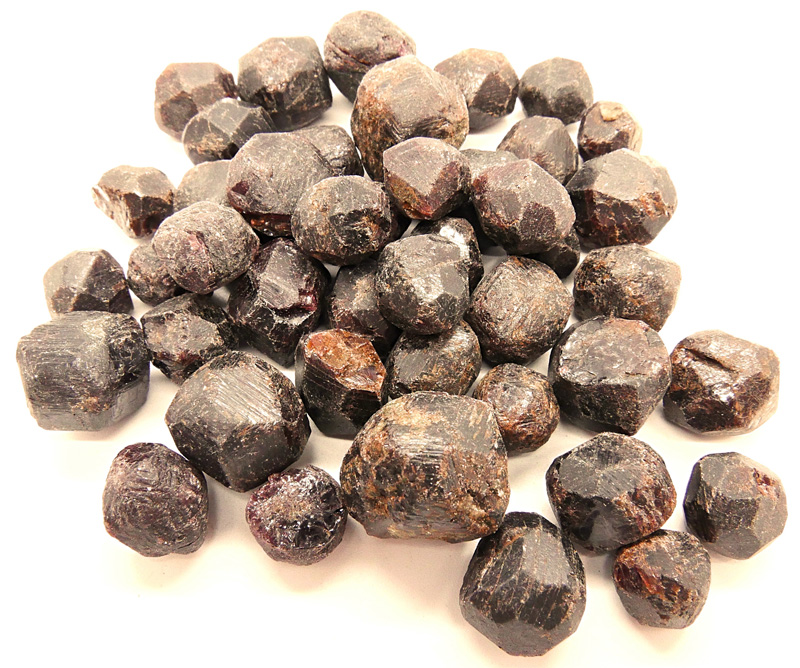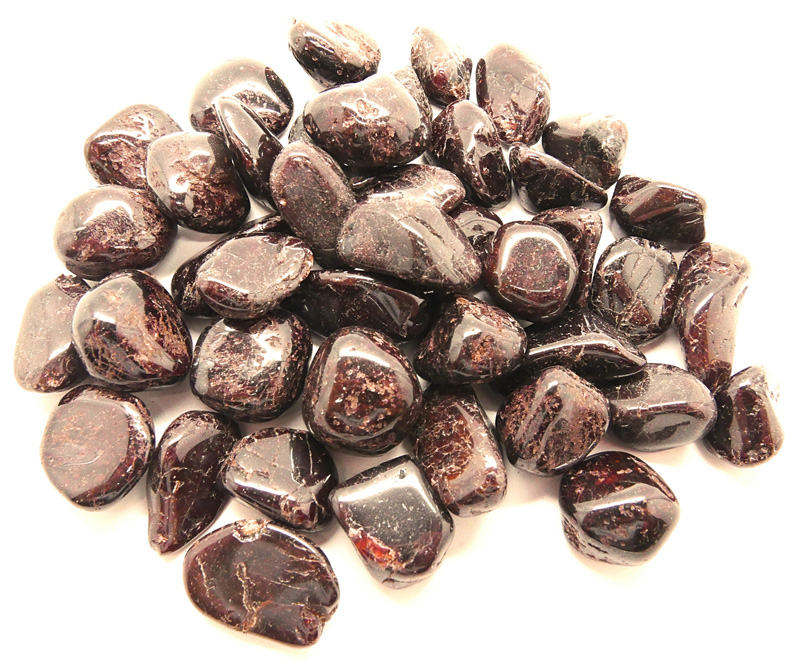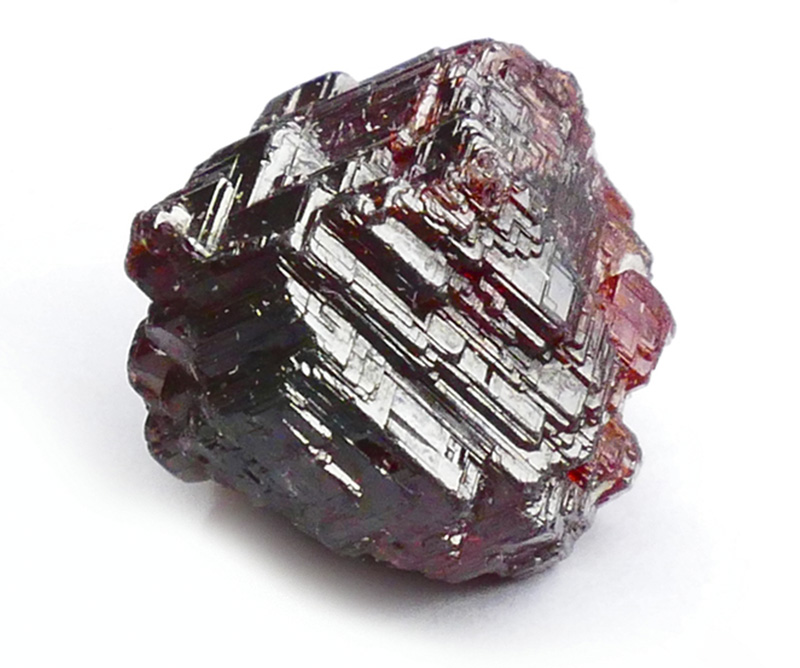


PHYSICAL PROPERTIES
- GROUP Nesosilicates
- COMPOSITION X3Z2(SiO4)3
- COLOR All except blue
- CRYSTALLINE SYSTEM Isometric, cubic
- CRYSTALLINE HABIT Trapezohedron, dodecahedron, massive
- HARDNESS 6.5 - 7.5
- FRACTURE Conchoidal to unequal
- EXFOLIATION Indistinct
- GLOSS Vitreous
- STRIP White
- TRANSPARENCY From transparent to opaque
- SPECIFIC GRAVITY 3.1 - 4.3
- REFRACTIVE INDEX 1.72 - 1.94
MINERALOGICAL CHARACTERISTICS
The garnet is a group of minerals with 15 different species. Although they can vary in color and chemical formula, all garnets have a cubic crystal system and usually form dodecahedrons, trapezohedrons, or both combined.
Among the most abundant garnets there is almandine (red or pink), pyrope (red or orange), spessartine (yellow, orange or red) and the grossular (green, red, orange, brown, yellow or white). The almandine when cut as a cabochon sometimes has a star-shaped optical effect. This is due to the rutile inclusions it may contain. The name of garnet comes from the Latin ”granatum” (endowed with grains), referring to the red fruit of the pomegranate.
Deposits: Thailand, India, Brazil, Madagascar, Sri Lanka, United States, Canada and Russia.
THERAPEUTIC PROPERTIES
The garnet is considered a 1st chakra stone, with vigorous energy. It helps to root strongly, which favors security and firmness of character. It enhances the libido and strengthens the area of the sexual and reproductive organs. It is indicated to cleanse, purify and strengthen the blood, being helpful in cases of anemia, chemotherapy and infections.


